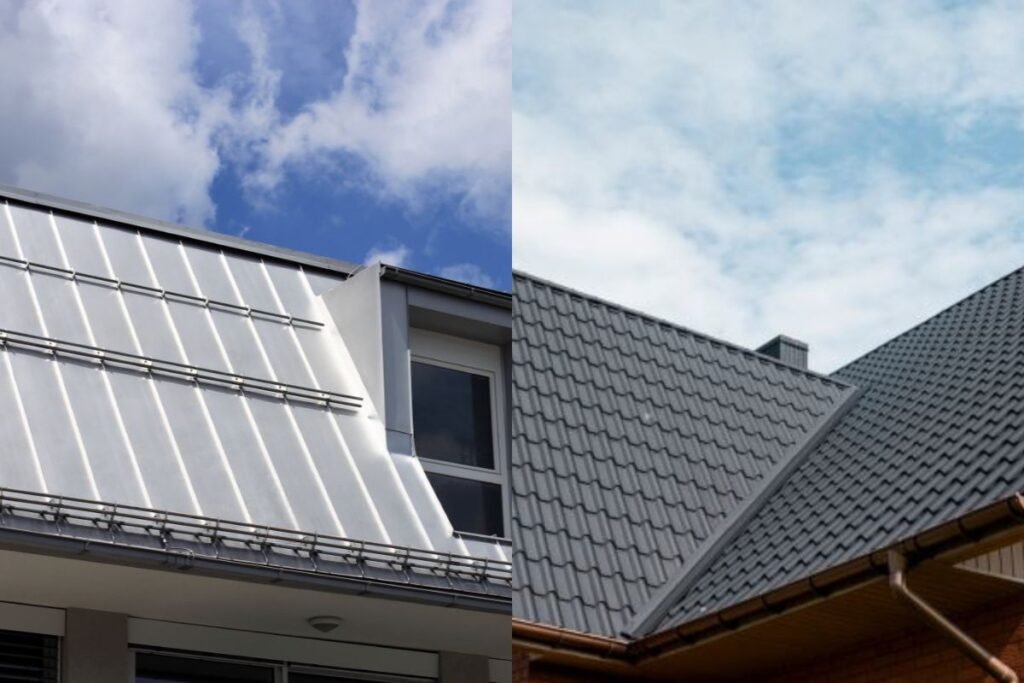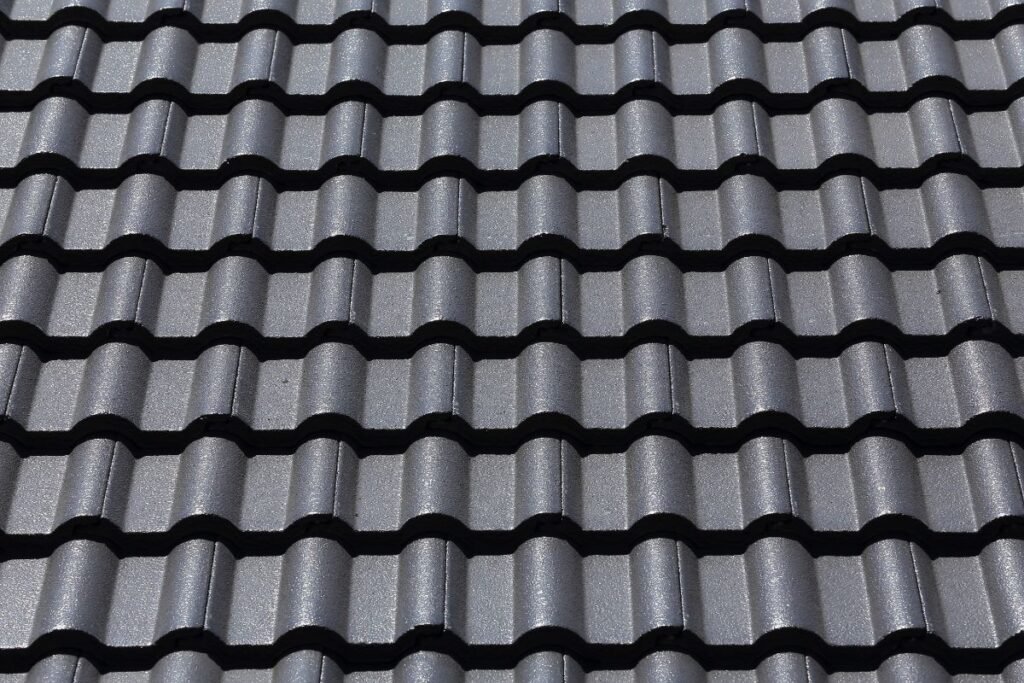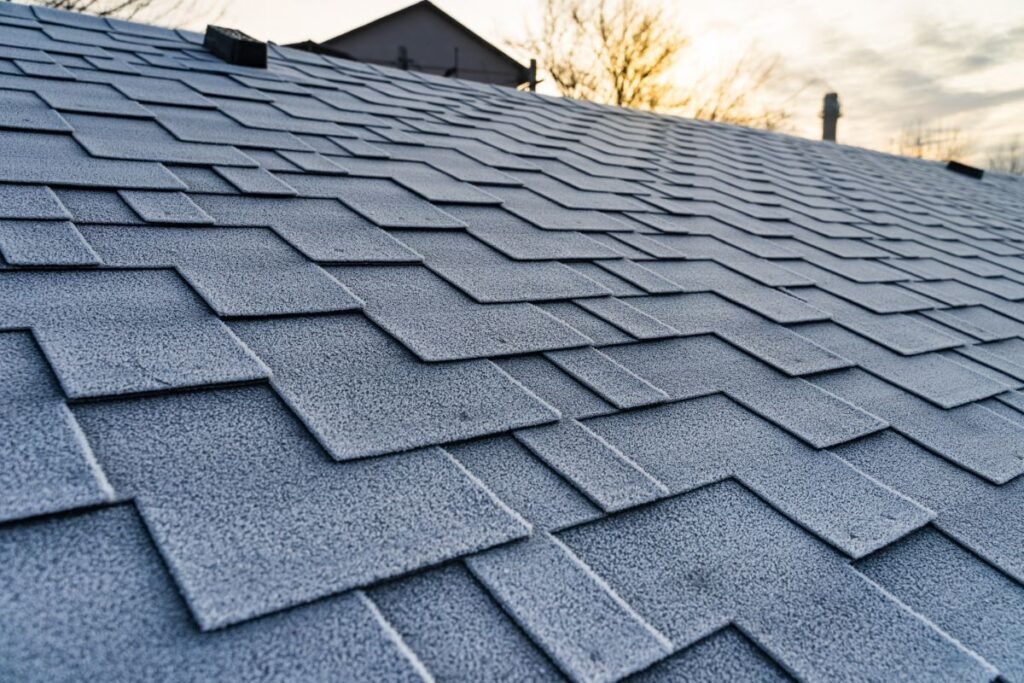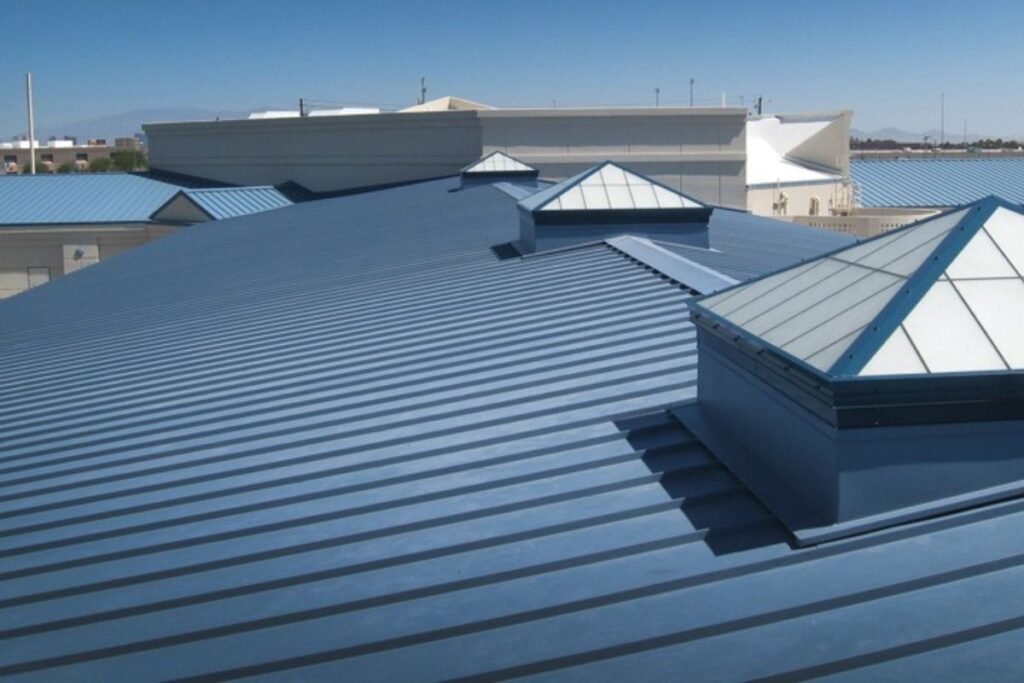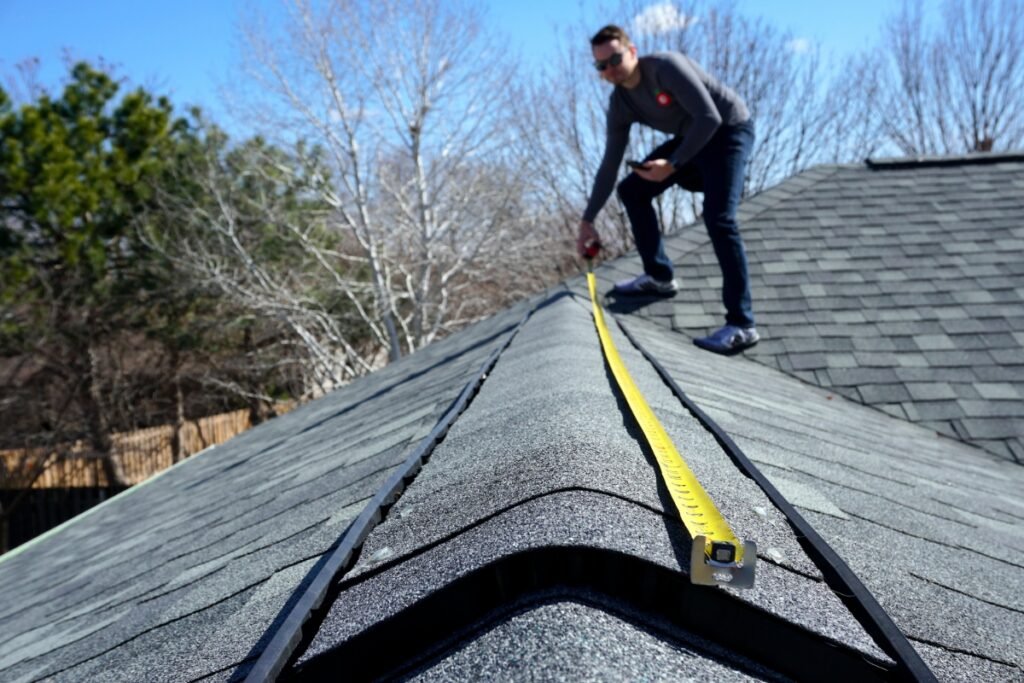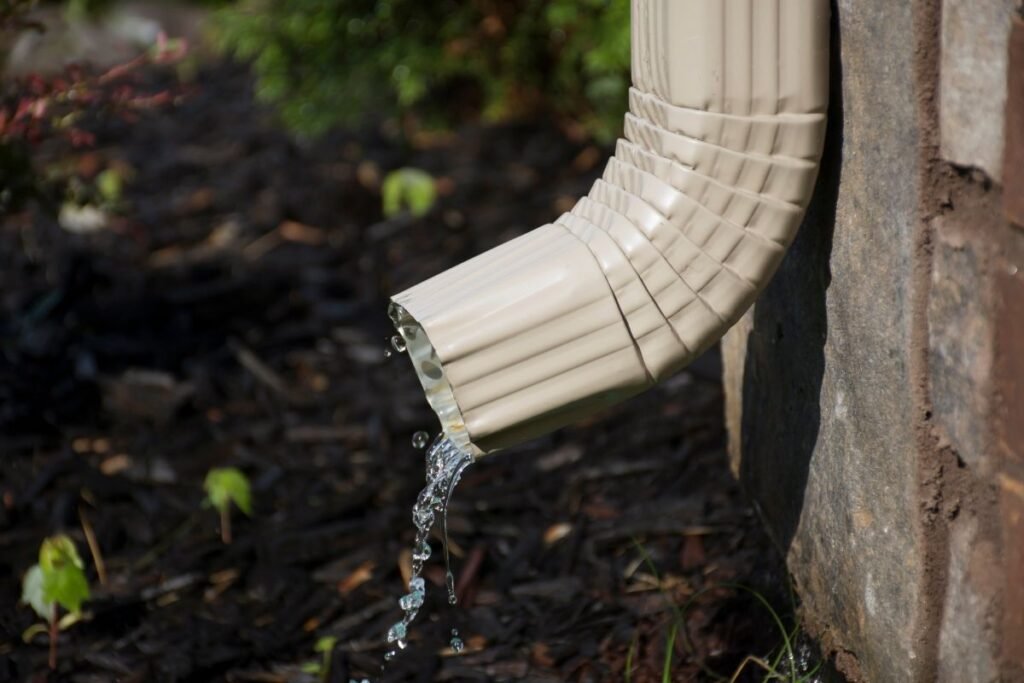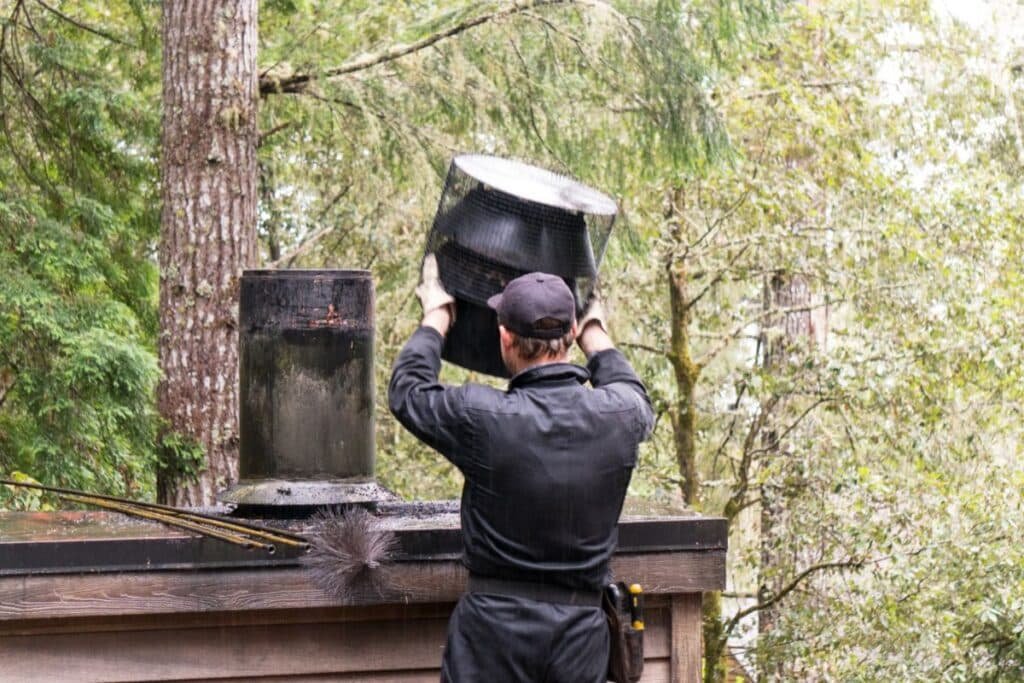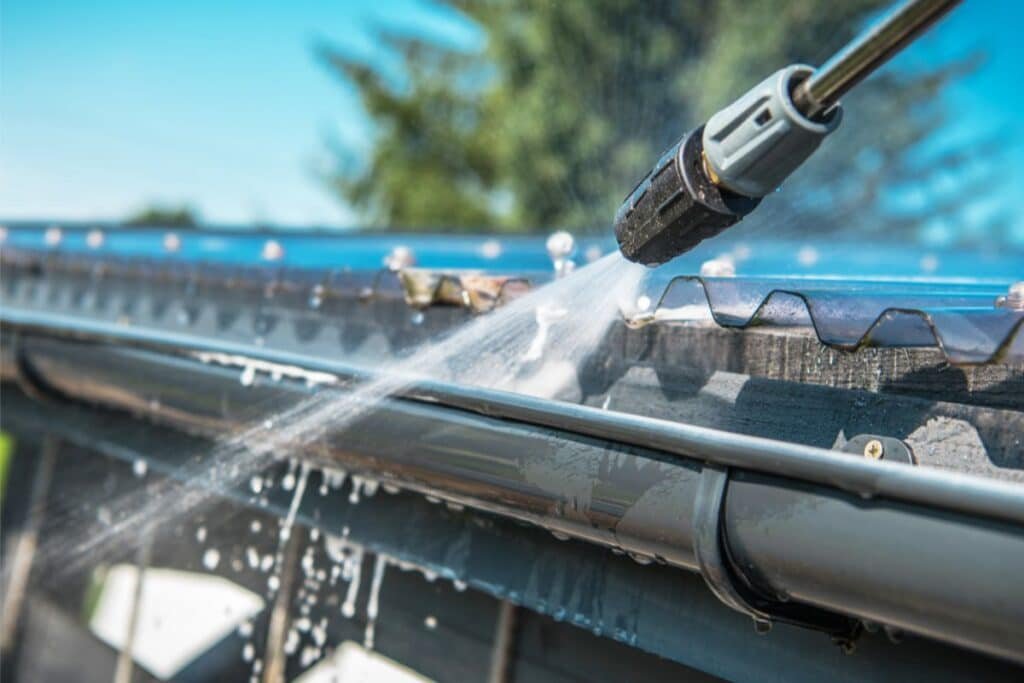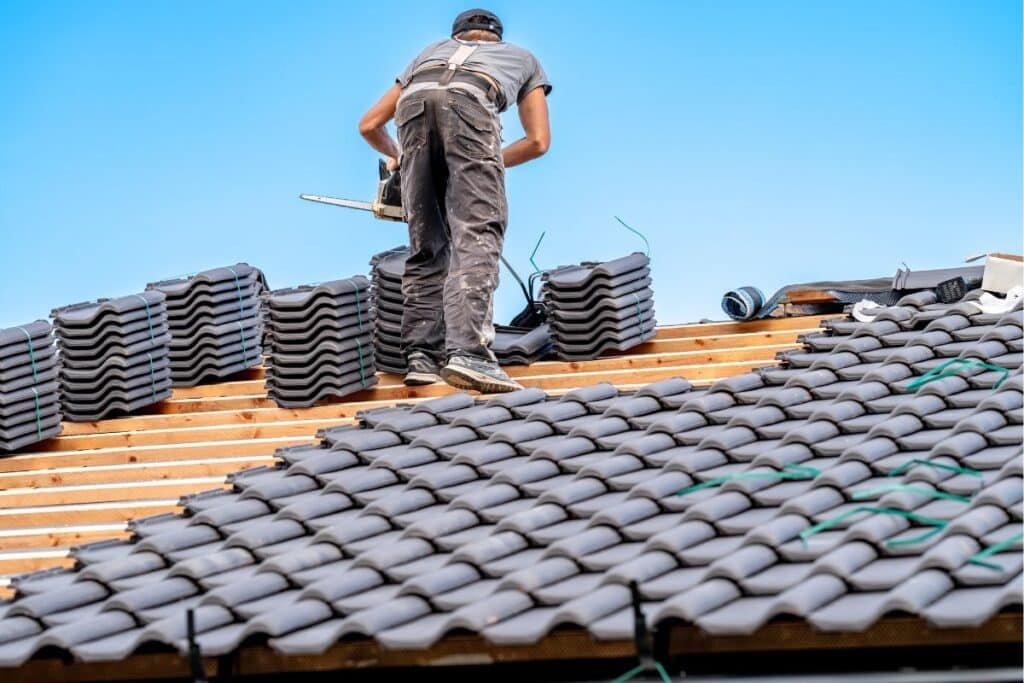Choosing the right types of gutter hangers for homes is important. It keeps gutters secure and effective. Gutter hangers hold gutters securely in place. They prevent gutters from slipping or coming loose, which allows rainwater to flow safely away from your home. This helps protect your home’s foundation.
This helps gutters work effectively to direct water away from your home. They help rainwater flow safely away from your home’s foundation. In this guide, you will learn about various gutter hanger options, including spike and ferrule, hidden, bracket and strap, K-style, T-bar, and fascia brackets. Each type offers unique benefits. You will also discover which hangers work best for different roof types and climates.
Plus, we will cover maintenance tips and costs so that you can keep your gutters in top shape throughout the year.
What is a Gutter Hanger?
A gutter hanger secures gutters to a building’s fascia or roof edge. These hangers hold gutters steady by stopping them from sagging or coming loose. Gutter hangers help direct water away from the home, which protects its foundation.
Hangers come in various types, each designed for specific gutter systems. Many are made from aluminum, steel, or plastic. Choosing the right hanger depends on factors like roof pitch and local weather. The right hanger ensures Proper gutter water management, which keeps gutters aligned.
Why Are Gutter Hangers Important for Your Home?
Gutter hangers are important for any home because it is more than just attachments. They are essential in protecting water damage to the home.
Gutter hangers keep gutters stable and aligned, which ensures that water is directed away from the foundation. If hangers aren’t secure, gutters can sag or come loose. This can lead to leaks that damage your foundation, walls, and yard.
It is very important to select the right type of gutter hanger because it increases the gutter system’s longevity and provides comfort in the event of severe snowfall or rain. A well-installed gutter hanger system supports your home’s structural integrity. It also helps to avoid costly repairs and preserve property value.
Types of Gutter Hangers for Homes
Different types of gutter hangers suit various home designs and climates. Below are common hanger types for reliable gutter support.
1. Spike and Ferrule Hangers
Spike and ferrule hangers are traditional and sturdy. These hangers use a long spike driven through the gutter and fascia. A ferrule tube maintains even spacing between the spikes. This hanger type works well in mild climates with limited storms. Spacing each hanger 18 to 24 inches apart prevents sagging. Spike and ferrule hangers may loosen over time, so regular checks are helpful. These hangers are a cost-effective and practical option for older homes. They provide strong support without complex installation.
2. Hidden Hangers
Hidden hangers provide a clean look for gutters. These hangers attach from inside the gutter, so there are no visible spikes. Hidden hangers are made from durable materials like aluminum or steel. These hangers are perfect for areas with frequent rain. Homeowners appreciate hidden hangers for both strength and curb appeal. These hangers keep gutters secure under heavy water flow. Hidden hangers are also easy to maintain, as their sleek design makes cleaning simpler.
3. Bracket and Strap Hangers
Bracket and strap hangers work well on steep or irregular roofs. This type of hanger has a bracket on the gutter and a strap to secure it to the roof. Bracket and strap hangers distribute gutter weight evenly.
It is ideal for snowy areas because this design reduces strain. These hangers also adjust to different roof angles, adding flexibility. Homes with complex roof designs benefit from bracket and strap hangers. These hangers hold gutters steady, even in strong weather.
4. K-Style Hangers
K-style hangers attach directly to the fascia and work with K-style gutters. These hangers hold the gutter flush against the home. K-style hangers help prevent water overflow by securing gutters tightly.
Homes in rainy climates find these hangers very effective. K-style hangers don’t need extra straps or spikes, The installation process is straightforward because the hangers don’t need extra straps or spikes. These hangers provide both strength and a streamlined look for homeowners. Their design supports water flow without sacrificing appearance.
5. T-Bar Hangers
T-Bar hangers work well on flat or low-pitched roofs. These hangers don’t need fascia support. A T-shaped bar hooks over the roof’s edge to secure the gutter. These hangers allow for easy gutter access during maintenanceT-Bar hangers are beneficial for homes without fascia boards. These hangers provide efficient gutter support for flat roofs without modifying the fascia. T-Bar hangers are perfect for those who need simple and secure gutter installation.
6. Fascia Brackets
Fascia brackets provide a direct and strong attachment for gutters. These brackets attach gutters straight to the fascia board. Fascia brackets work well for heavier gutters. Secure attachments like these are essential for homes in areas with high winds or heavy rain.
It is made from metals like aluminum and steel. Fascia brackets are designed to hold gutters securely in place during storms and withstand harsh weather. Fascia brackets are a dependable choice for long-lasting support.
How Much Does a Gutter Hanger Cost?
Gutter hanger costs vary by type and material. Basic types, such as hidden hangers or spike and ferrule, cost between $1 and $3 each. Bracket-and-strap hangers and fascia brackets are special options that cost $3 to $6 each.
You may also need to consider labor costs for professional gutter services. Investing in quality hangers ensures that gutters stay secure and last longer. A proper installation can save homeowners from expensive gutter repairs.
How to Keep Your Gutter Hangers Working Longer
To keep your gutter hangers strong and effective, try these easy tips:
- Check Twice a Year: To spot any issues early, You should check your gutter hangers twice a year, especially after strong storms.
- Tighten Loose Screws: If you find any loose screws, tighten them up to stop your hangers from shifting or sagging.
- Look for Rust: Check metal hangers for rust. Rust can weaken their hold, so if you spot any, consider replacing those hangers.
- Clear Out Leaves and Debris: Keep your gutters free of leaves and debris. Extra weight can put a strain on your hangers and cause them to loosen over time.
- Check Hanger Spacing in Snowy Areas: If you live in an area with heavy snow then make sure your hangers are spaced close enough to handle the weight. Proper spacing can keep your gutters stable in the winter season.
- Align Hidden and Bracket Hangers: Verify that bracket-and-strap hangers and hidden hangers are properly aligned. Proper alignment helps to keep your gutters stable and secure.
Conclusion
It is a very important step to pick the right types of gutter hangers for homes. It keep your home safe from water damage. You can find the best type for your roof and weather with choices like hidden hangers, spike and ferrule, and fascia brackets. It will keep your gutters secure and working well.
Regular maintenance such as tightening screws, checking for rust, and clearing out debris can help them last longer and work better. Choosing strong hangers and maintaining them helps keep your home protected year-round. This gives you peace of mind.
Frequently Asked Questions
What is the standard gutter?
Choosing the right size gutter is very important because it can help manage water effectively and prevent overflow during storms.
The standard gutter size is typically 5 inches in width for residential homes. This size works well for most properties, handling typical rainfall without overflowing. However, some homes use 6-inch gutters for better water flow, especially in areas with heavy rain.
How to Hang Christmas Lights on a Gutter Guard
Hanging lights on gutter guards is simple with the right approach. Follow these steps to keep your lights secure and your gutters safe.
- Use light clips designed specifically for gutters.
- Attach the clips to the edge of the gutter, spacing them evenly.
- Slide the light string securely into each clip.
- Avoid puncturing or damaging the gutter guard during installation.
- This method keeps your lights in place and protects your gutters from damage.
What kind of gutter is more water-resistant?
Aluminum and vinyl gutters are highly water-resistant. Aluminum gutters are durable, rust-free, and can handle heavy rainfall. On the other hand, Vinyl gutters are also water-resistant and affordable, but they may not last as long in extreme weather.
Can I Hang Christmas lights with gutter guards?
Yes, you can hang Christmas lights with gutter guards! For that, you can use special gutter clips that fit over the guard edge. These clips hold the lights without interfering with the guard, which keeps your gutter protected while adding holiday cheer. This is an easy and effective way to decorate while keeping your gutters intact.
How to hang a gutter?
Hanging a gutter correctly ensures proper water flow and prevents damage. Follow these simple steps to install gutters securely and protect your home.
- Measure and mark the slope so that water flows correctly.
- Evenly space the gutter brackets before you attach them to the fascia board.
- Snap each gutter section into the brackets.
- Connect the downspouts to guide water away from the house.
- Check that the gutter is stable and straight.
- Proper spacing and alignment help stop leaks and sagging.
What are the fasteners for gutters?
The main fasteners for gutters are screws, brackets, and hangers. These fasteners attach gutters to the fascia and keep them stable. Screws are commonly used for secure attachment, while hangers and brackets offer added support to prevent sagging. Using the right fasteners can extend the life of your gutters and reduce maintenance.
What is the most common gutter style?
The most common gutter style is the K-style gutter. This style features a decorative, curved front similar to crown molding. It blends well with most home designs. K-style gutters are durable and can hold more water. This style is popular and comes in both 5-inch and 6-inch sizes. Their shape and capacity make them a favorite choice for residential properties.


